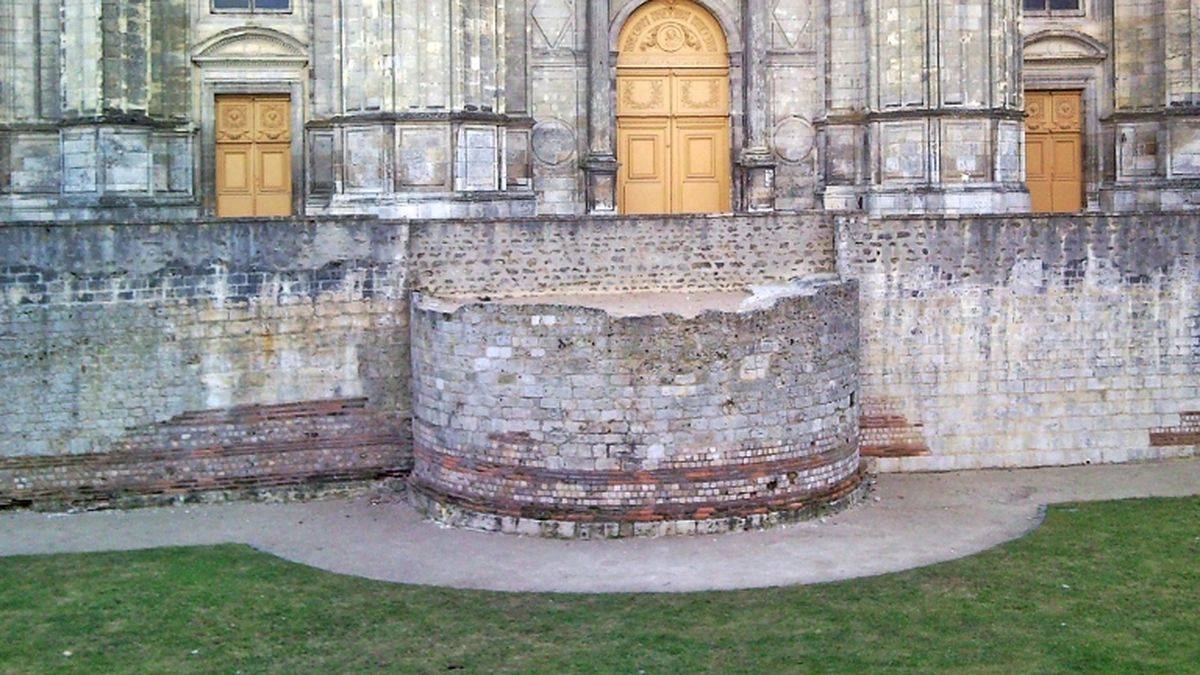 The rampart | ©Anecdotrip.com / CC-BY-NC-SA
The rampart | ©Anecdotrip.com / CC-BY-NC-SABehind the cathedral, we come across... on walls. Of course! Those are last Gallo-Roman's vestiges of the city's second wall.
Look! The lower part is an alternation of bricks and stones, typical of Gallo-Roman period. The upper part of the wall is an alternating pattern made of white stones, typical of medieval times.
The first wall was raised when Roman ruled. At that time, it measured 25 hectares.
The second wall: near Orléans, it existed a little village called Avenum. Avenum and Orléans often quarreled, so they decided to annex the two cities in 1300. In the 14th century, this second wall measured 37 hectares.
Now, let's see the third wall... King of France Louis XI married his daughter with duke of Orléans. He loved Orléans city! So he decided to rebuild a church dedicated to saint Aignan. And in order to protect this church, he ordered Orléans people to raise a wall: in 1466, the Tour-Neuve's gate was raised and surrounding walls were extended.
At the end of the 15th century, the wall was 60 hectares!
Now, the fourth wall: Orléans city was, at that point, very irregular. So duke of Orléans Louis decided to standardize the city. Building site began in 1486. In the 16th century (1557), a long wall was laid out: Orléans current boulevards!
